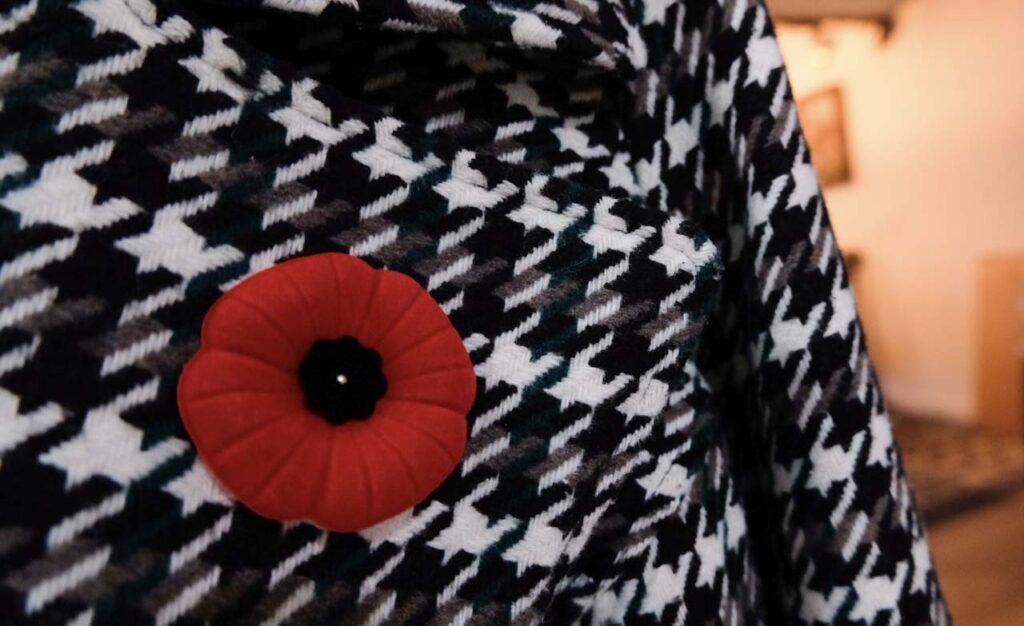Beyond remembrance, the poppy does more good

Hard to miss amidst the stark white backdrop of Calgary’s most recent snowfall, the red poppy is once again ubiquitous in the days leading up to Nov. 11.
“When the conversation comes up about the poppy, I say it’s not just an act of remembrance; it’s an act of respect,” said Mike Burgess, command service officer for the Royal Canadian Legion in Southern Alberta.
In Canada, the poppy is as poetic as it is evocative. In 1915, Lieutenant-Colonel John McCrae, a Canadian medical officer, penned and published a poem for a fallen comrade. Six years later, its vivid imagery inspired Anna Guérin of France to create remembrance poppies out of fabric for charity. Today, the poppy is worn to honour Canada’s troops every year during the Remembrance period, as well as veteran funerals and other commemorative events.
According to Burgess, approximately 20 million poppies are in circulation annually. Wearing the symbol is optional.
“I never get upset with anyone who doesn’t want to wear a poppy for any reason because that’s a personal choice,” he said. “When you are granted freedoms, you’re granted freedoms to choose. If you want to go overseas and risk your life for people’s liberty and their freedoms, you don’t get to tell them what those freedoms are.”
At present, most Calgary establishments carry poppy boxes. People receive a poppy pin by donating cash or using the attached tap-enabled devices.
“As far as I know, anyone can buy and wear the poppy to respect the troops,” said Rosalina Cato, a newcomer to Canada.
There is, however, no commercial value to the poppy.
“The idea of doing this and wearing this is just an act of remembrance,” he said. “You’ve done your bit. If you don’t have any funds, you don’t need to make a donation.”
Donations to the poppy fund directly help veterans and their families. It is completely separate from other funds in the legion.
“The remembrance act for me is not just remembering the fallen,” said Burgess, who also served in the British Army’s 24 Commando Royal Engineers. “It’s also remembering the people who made it back, who are still living with their injuries.”
As an executive member of the legion, Burgess encounters veterans suffering from various traumas, both physical and mental, on a daily basis.
“One of the things that we use poppy funds for is we help people get their first and last rent,” he said. “We help them get established. We help them find safe housing.”
A means-testing process determines the eligibility of poppy fund recipients. The legion further helps veterans access resources from Veterans Affairs Canada and other agencies that may be unknown to them.
“When people come to us, we try and treat them with dignity and humility and help them out,” said Burgess. “When they know that these funds come from the general public, it means something because it means that people actually care.”